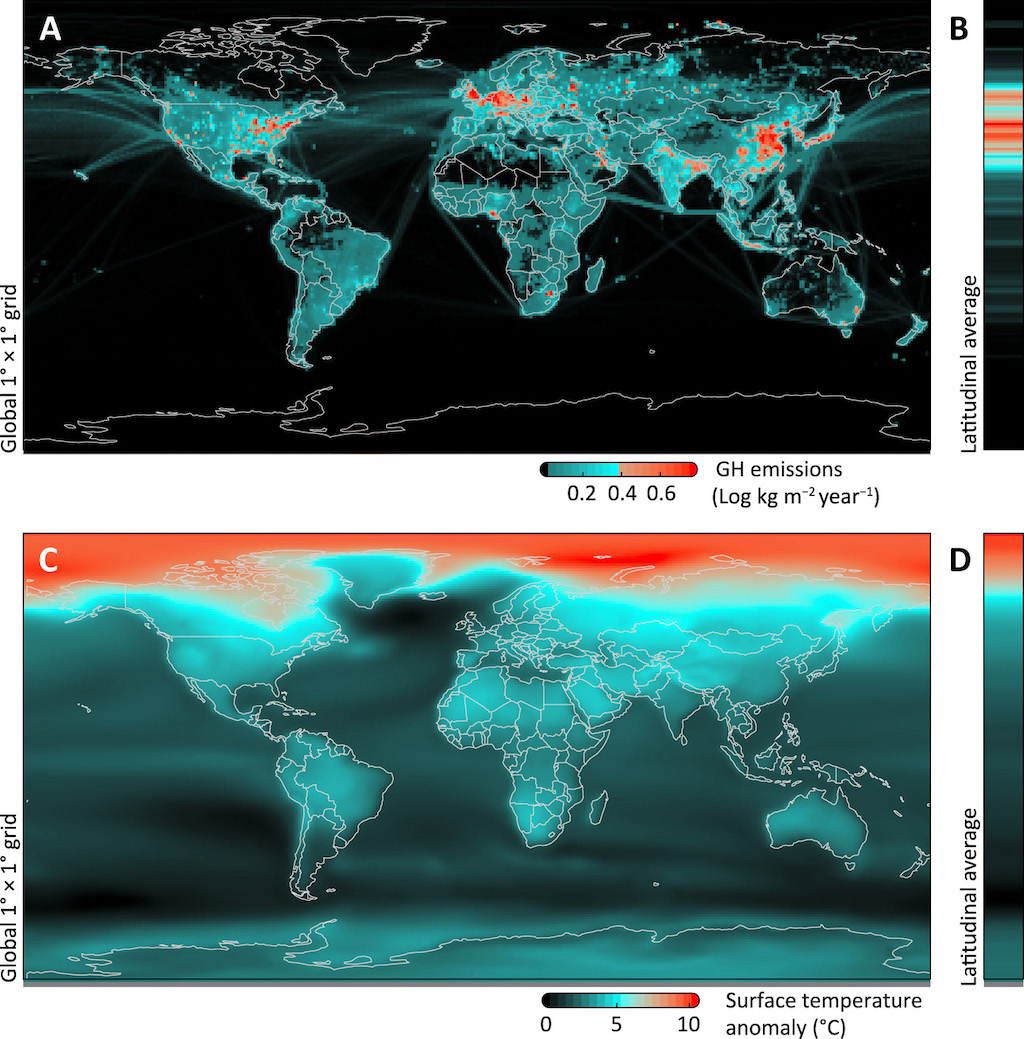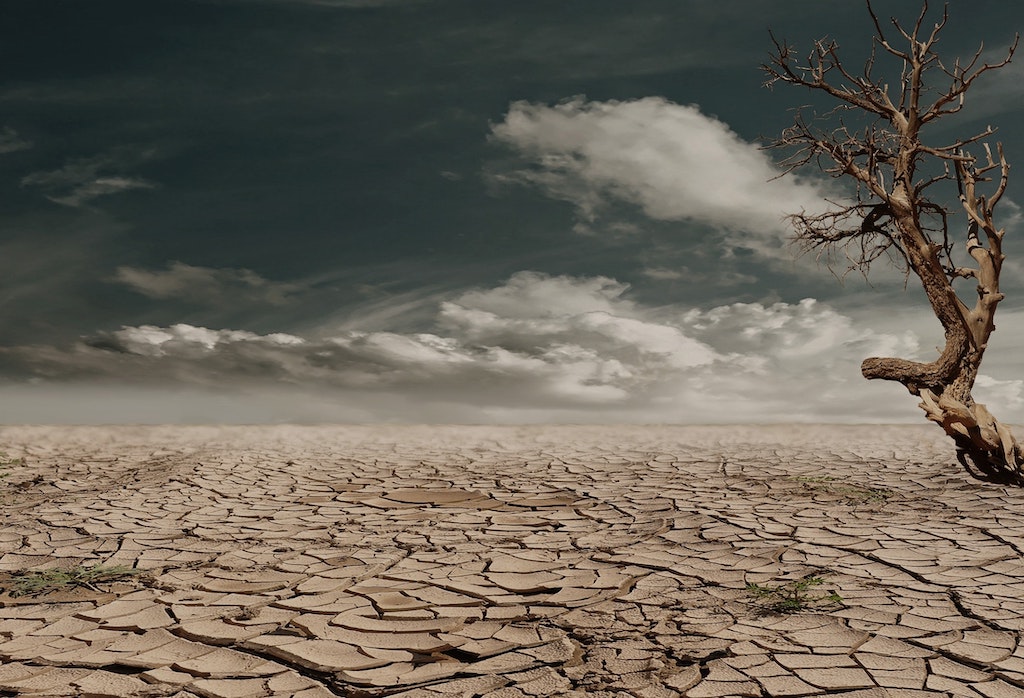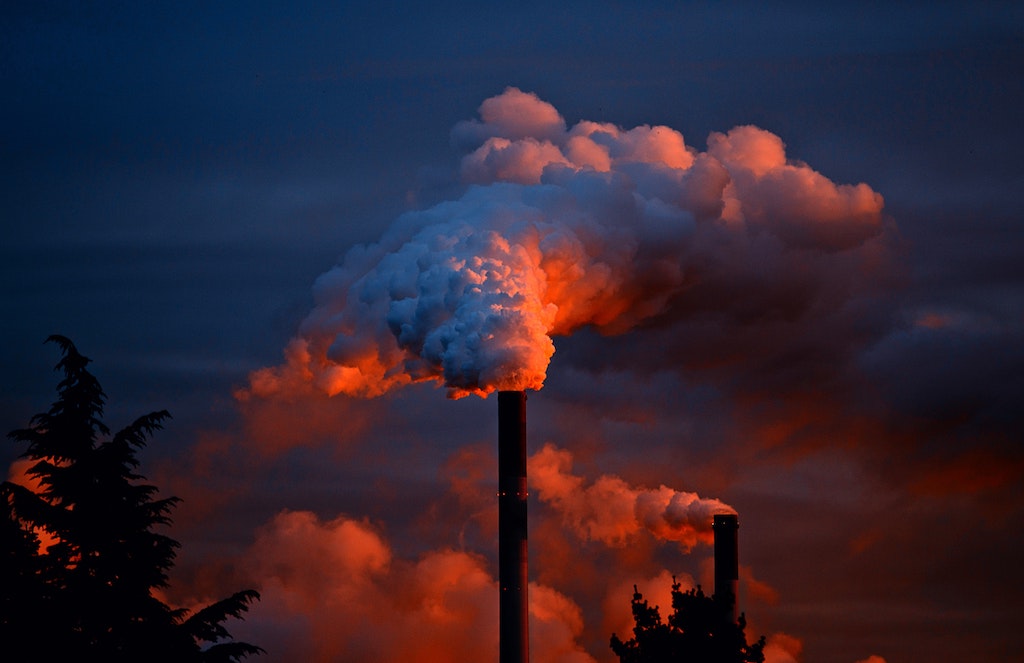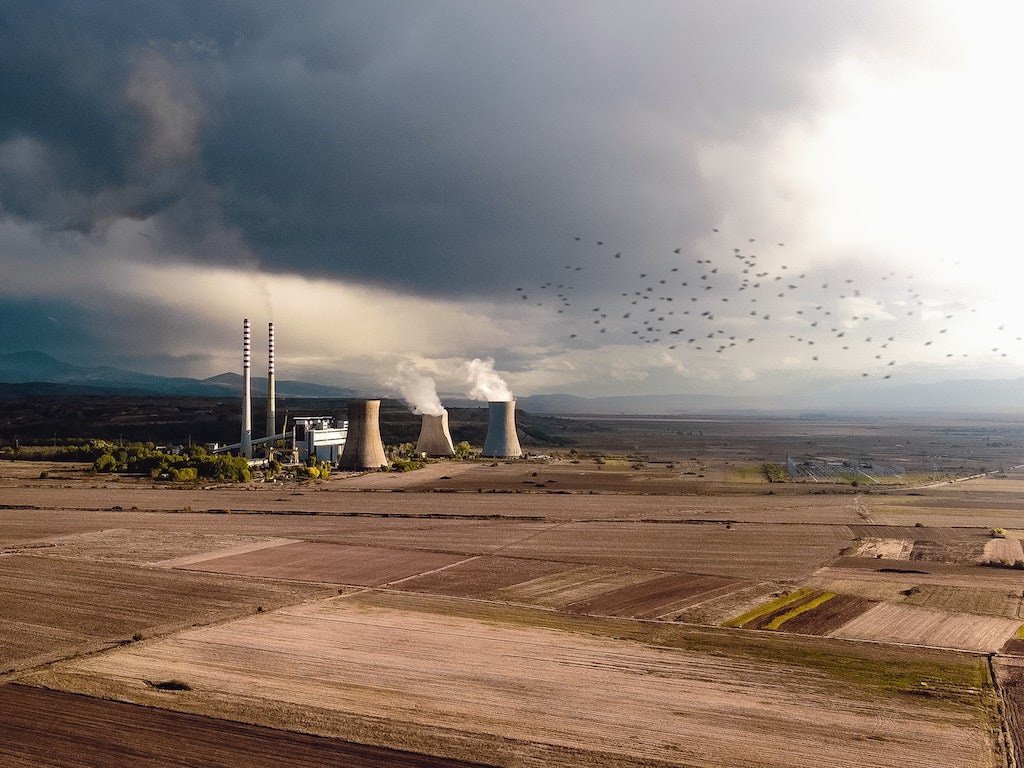4 Mins Read
A new study has found that 90% of all greenhouse gases are emitted across only 8% of the planet’s surface area. However, extreme heating will be felt by more than half of Earth’s landmass by the end of the century. Illustrating their findings in a new map, the scientists point out the “fundamental disparities” in the geographies that produce the most emissions and regions that will suffer the most from it.
There is a huge inequality between the areas responsible for global heating, and the regions that will feel the worst impacts of resultant climate change. That’s the conclusion of a new study, led by the Monterey Bay Aquarium, which literally mapped out where and who will experience the greatest effects of the climate crisis. It has been published in the peer-reviewed journal Sciences Advances.
‘Narrow origins, far-reaching impacts’
Researchers from the Monterey Bay Aquarium built the map by charting the emissions of the top four GHGs, which together make up 92% of the world’s emissions from 1970 to 2018. These include CO2, methane, nitrous oxide, and black carbon, also known as PM2.5.

The scientists then compared the sources of these four GHGs to global heating projections over the entire surface of the Earth. While the sources of emissions from human activities were concentrated across just 8% of the Earth’s total surface area, more than half of the world’s landmasses are set to experience extreme heating by the end of this century.
“One of the dirty tricks of climate change is that local pollution has far-reaching consequences,” said Dr. Kyle Van Houtan, who led the study.
“When we burn fossil fuels like coal, oil, and gas locally, we mix them in the experimental chamber pot of our planet’s atmosphere. The result is that their warming impacts are often exported to far away locations.”
Africa and Central Asia face the most disruption
Despite contributing the least to global warming, countries in Africa and Central Asia are going to be experiencing the worst impacts of climate change.

Meanwhile, well-developed and industrialised countries in Western Europe, North America, and the Arabian Gulf states will see fewer climate impacts, even though they are responsible for the bulk of the world’s heat-trapping emissions.
The authors note that these “fundamental disparities” are also found within countries. In the U.S., emissions are concentrated in the industrial northeast, but the most extreme temperature rise is set to occur in the western parts of the country, such as Alaska, Idaho, and Montana.
Commenting on the findings, Dr. Van Houtan urged for more discussion on equitable climate solutions and greater international cooperation in bringing global emissions down.
“When we listen to the scientific consensus—and to the people suffering most from climate disruption—we see that only a broad, international collaboration to stabilize our planet’s climate will work.”

Emissions inequality
It’s not the first time that scientists have pointed out the outsized role of richer countries or concentrated regions in driving climate change.
Research conducted by Oslo-based nonprofit EAT highlighted how G20 states, the world’s top 20 economies representing just 10% of countries, produce nearly 75% of all emissions from the food system. This is primarily due to the meat- and dairy-heavy diets of richer countries.
Another recent study found that an “elite minority” of frequent air travelers are driving an unfair share of the world’s aviation emissions. Just 12% of Americans, for instance, account for a third of all flights taken in the country. In China, 5% of people took 40% of all flights.
Leo Murray, co-founder of British climate NGO Possible who was behind the study, echoed the calls for equitable climate action. “We must find ways to rapidly drive emissions down that are fair, equitable and just.”
Lead image courtesy of Pexels.




